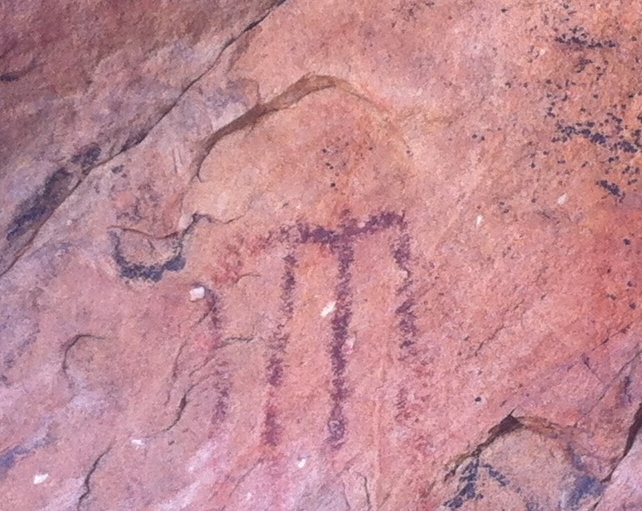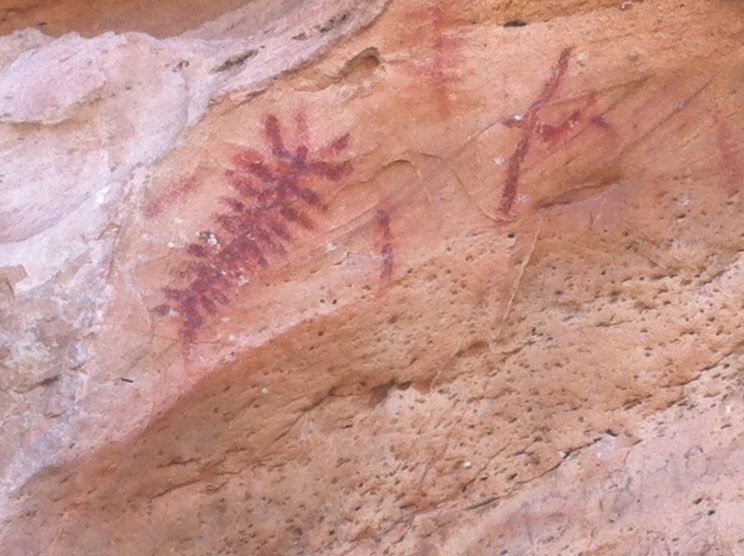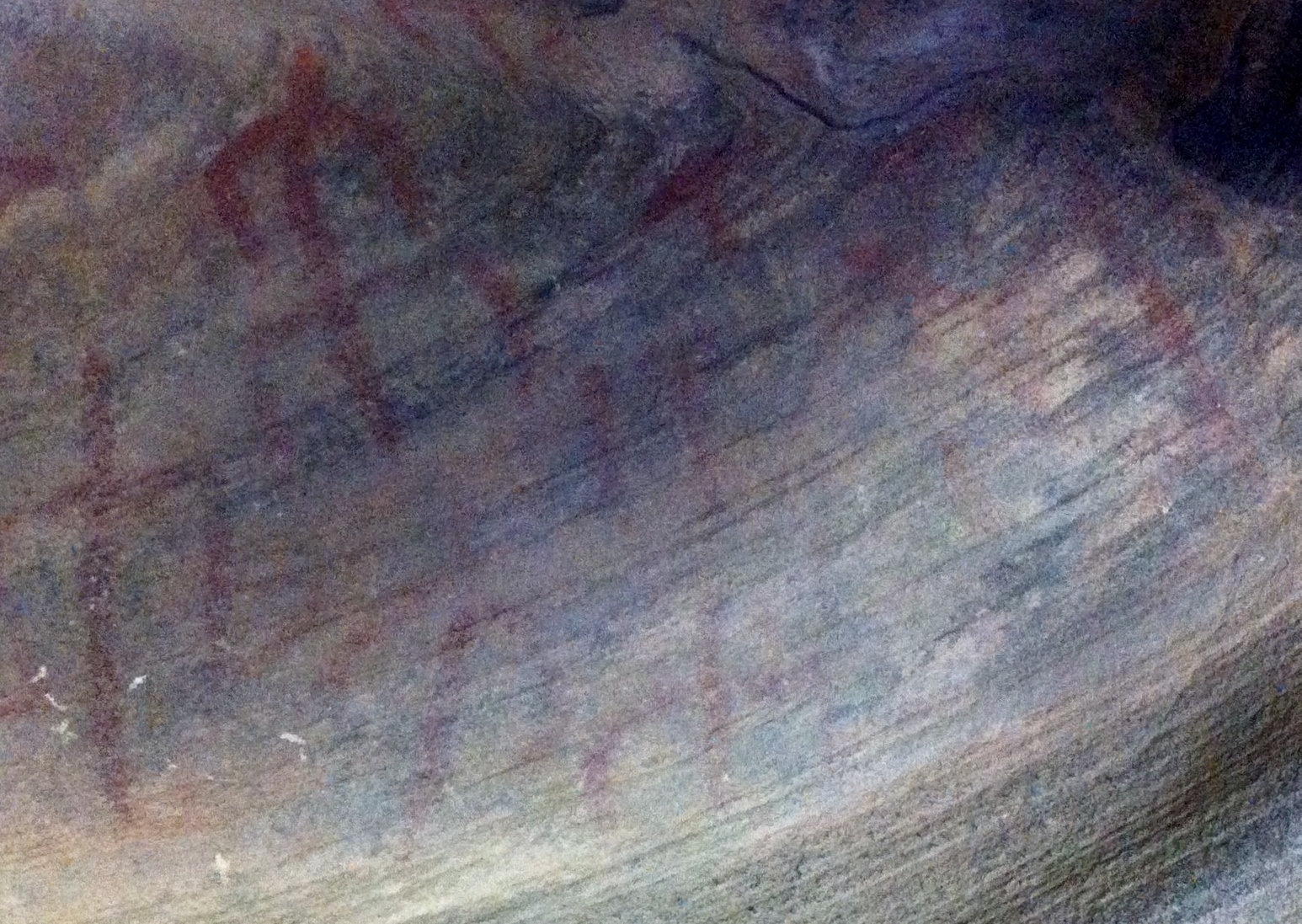We are discussing mysteries in our Spanish class. The statues of Easter Island, alien abductions, ancient markings on the land only visible from the sky. It’s so that we can express opinions and put forward theories about what we believe.
I’m such a newbie here, still exploring my own little bit of the Axarquía, let alone the rest of Andalucía. But I was still surprised when everyone else in the class suggested Las Cuevas de Casabermeja as one of the local mysteries. Just a few kilometres outside Colmenar, and I must have driven past them close to a thousand times. With cave paintings believed to be 8,000 years old! But they were certainly a mystery to me, and I was ashamed to admit I’d never even heard of them.
My friend Carol is a keen walker and came to stay a few days after the class so it was an ideal opportunity to grab our boots and head off. The track was easy to find, we parked by the chain as instructed, and headed up the path with now only scanty instructions involving “pushing through some bushes”. Fortunately two Spanish women were walking their dogs and gave clear and helpful guidance that led us directly to the caves.
 It was a bit of a treasure hunt, as there are hundreds of the shallow caves, so it was a thrill to find our first ancient cave-painting – a sheep (or maybe a goat) which was very clear, painted by finger using red ochre natural pigments.
It was a bit of a treasure hunt, as there are hundreds of the shallow caves, so it was a thrill to find our first ancient cave-painting – a sheep (or maybe a goat) which was very clear, painted by finger using red ochre natural pigments.
The trees and rocks are a wonderful playground for scrambling around, and further round to the left in another set of caves we found a kind of centipede thing which later led to much debate about what it actually was. To me it looked like a fern, to many others more like a centipede or millipede. But our teacher, Juanmi,  explained that the archaeologists are divided over this particular image, but had settled on describing it as some form of family tree, each “leg” or “leaf” representing a member of the family. Personally I’m sticking with the fern!
explained that the archaeologists are divided over this particular image, but had settled on describing it as some form of family tree, each “leg” or “leaf” representing a member of the family. Personally I’m sticking with the fern!
The prize for which we were searching was the fox with a red tail. We had found a number of other paintings, including a quite extensive one that to me looked like a family sitting down at a dining table.  , showing the photo to Juanmi he said “Eso es el zorro!” – it was the fox all along! And once he’d pointed it out, I could make out the fox in the top right corner, with a red tail.
, showing the photo to Juanmi he said “Eso es el zorro!” – it was the fox all along! And once he’d pointed it out, I could make out the fox in the top right corner, with a red tail.
The sun was beating down as we made our way back down the grassy slope to the riverbank. It’s a beautiful spot, and searching for cave-drawings made for an interesting short walk. So close to home, too - I don’t know how I’d managed to remain oblivious to them. It’s a mystery!
© Tamara Essex 2014
THIS WEEK'S LANGUAGE POINT:
Another mystery unravelled! Juanmi had done some research, and had returned with the definitive answer as to why the phrase “…. una casa poco luminosa …” uses POCO rather than POCA.
The prize for working it out when I posed the question below blog post 94 – Priceless, goes to Steve Doerr. He spotted first that the word POCO was functioning as an adverb qualifying the adjective “luminosa”, and that adverbs are invariable so do not change their endings to match the noun or the adjective. In the same way, but less controversial and therefore a good example, I would say “Me gusta mucho ésta casa.” In that phrase, both I and the house are female, but MUCHO remains invariable as it is an adverb qualifying the verb gustar. So if we can accept that, we can also accept the POCO example.